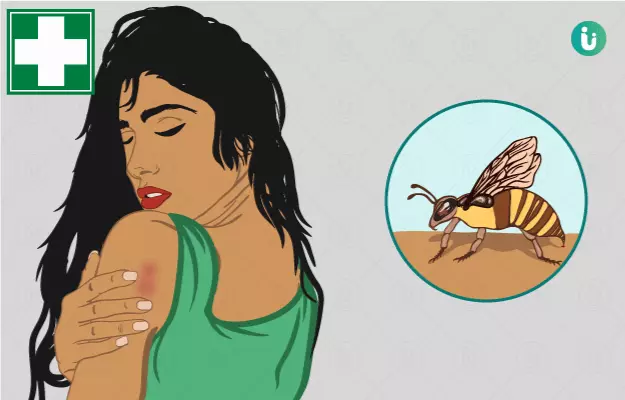Nothing spoils a gardening or outdoor experience as much as a bee sting. These tiny insects are important for the ecosystem but they can be a real nuisance when they leave a stinger in your skin. Although bee sting generally is not that severe, it induces great pain.
Did you ever wonder why?
When a bee stings, it inserts its venom into the body, this venom is water soluble and cytotoxic (toxic to cells); so, it spreads through the body really fast and leads to swelling and discomfort on the stung area.
While a bee sting could be nothing more than a localised inflammation, people who are allergic to bees may develop excessive swelling or an anaphylactic reaction in severe cases. The latter usually manifests in the form of uneasiness or dizziness, Itching, hives, fever, swelling and it is best to check in with a doctor immediately if you experience any of these symptoms.
Fortunately, not a lot of people are allergic to bees and for the rest of us, it is really easy to get the sting out.
So read on to know what to do and what not to do the next time you get stung by one of these.
99% Savings - Buy Just @1 Rs
X

- हिं - हिंदी
- En - English
- Treatment
-
- Skin Issues
- Acne
- Fungal Infection
-
- Hair Problems
- Hair Growth
- Hair Dandruff
- Self-Analysis
-
- Chronic Diseases
- Diabetes
- Heart Care
- Weight Loss
- Sleep Support
- Liver Care
- Stress & Anxiety
- Our Brands
- Doctor Consultation
- Medicine A-Z
-
Health A-Z
-
- Treatments
- Home Remedies
- Herbs
- Surgery
- Lab Test
- Therapy
- First Aid
- Ayurveda
- Homeopathy
-
- Yoga And Fitness
- Fitness
- Yoga
- Weight Loss
- Weight Gain
-
- Other Topics
- Baby Names
- Beauty
- Healthy Foods
- Tips
- Health News
- Pet Health
- Men Health
- Medical Cannabis
- Login / Sign Up



































